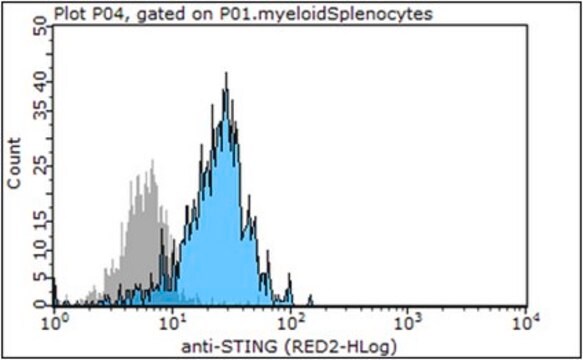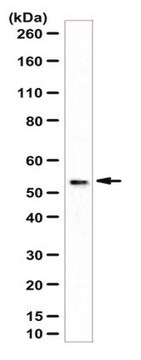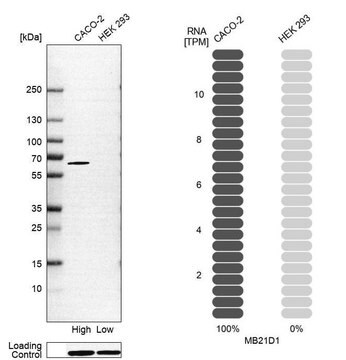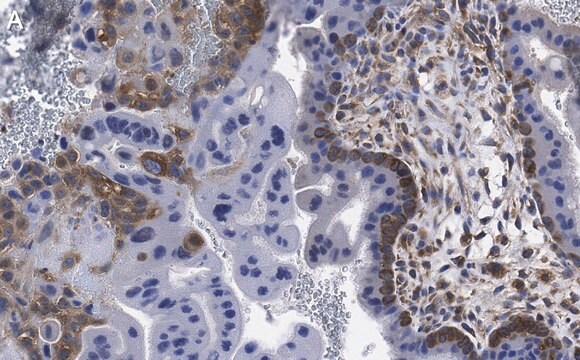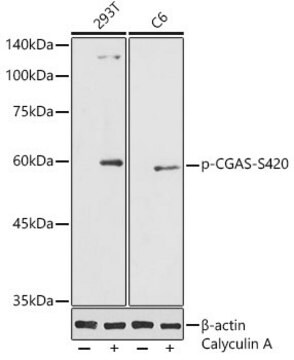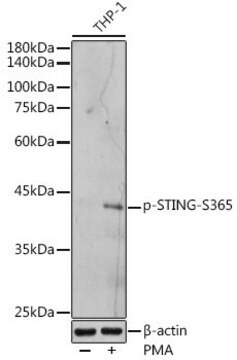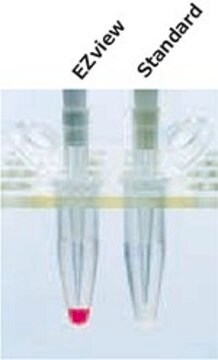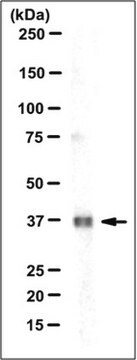MABF270
Anti-STING Antibody, clone S17G2C4B7
clone S17G2C4B7, from mouse
Sinonimo/i:
Stimulator of interferon genes protein, Endoplasmic reticulum interferon stimulator, ERIS, hMITA, hSTING, Mediator of IRF3 activation, Transmembrane protein 173
About This Item
Prodotti consigliati
Origine biologica
mouse
Livello qualitativo
Forma dell’anticorpo
purified antibody
Tipo di anticorpo
primary antibodies
Clone
S17G2C4B7, monoclonal
Reattività contro le specie
mouse, human
tecniche
immunocytochemistry: suitable
western blot: suitable
Isotipo
IgG1κ
N° accesso NCBI
N° accesso UniProt
Condizioni di spedizione
wet ice
modifica post-traduzionali bersaglio
unmodified
Informazioni sul gene
human ... TMEM173(340061)
Descrizione generale
Specificità
Immunogeno
Applicazioni
Inflammation & Immunology
Infectious Diseases - Viral
Immunocytochemistry Analysis: A 1:50 dilution from a representative lot detected the expression of exogenously transfected human and murine STING in HEK293T cells, as well as the endogenous STING in telomerase-immortalized human foreskin fibroblasts hTERT-BJ1 (Courtesy of Dr. Glen N. Barber, University of Miami School of Medicine, FL, U.S.A.).
Qualità
Western Blotting Analysis: 1.0 µg/mL of this antibody detected STING in 50 µg of HEK293T cell lysate.
Descrizione del bersaglio
Stato fisico
Stoccaggio e stabilità
Altre note
Esclusione di responsabilità
Non trovi il prodotto giusto?
Prova il nostro Motore di ricerca dei prodotti.
Codice della classe di stoccaggio
12 - Non Combustible Liquids
Classe di pericolosità dell'acqua (WGK)
WGK 1
Punto d’infiammabilità (°F)
Not applicable
Punto d’infiammabilità (°C)
Not applicable
Certificati d'analisi (COA)
Cerca il Certificati d'analisi (COA) digitando il numero di lotto/batch corrispondente. I numeri di lotto o di batch sono stampati sull'etichetta dei prodotti dopo la parola ‘Lotto’ o ‘Batch’.
Possiedi già questo prodotto?
I documenti relativi ai prodotti acquistati recentemente sono disponibili nell’Archivio dei documenti.
Il team dei nostri ricercatori vanta grande esperienza in tutte le aree della ricerca quali Life Science, scienza dei materiali, sintesi chimica, cromatografia, discipline analitiche, ecc..
Contatta l'Assistenza Tecnica.